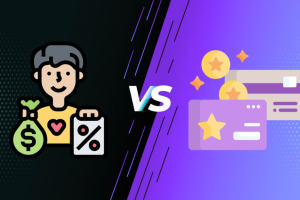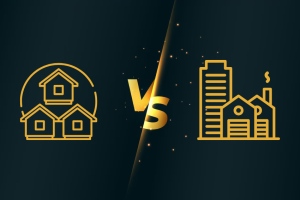It is apparent that mobile phones have become omnipresent; they are everywhere. With mobile phones, the reliance on mobile applications for performing day-to-day functions has tremendously increased. This increase in the use of mobile applications has further led to growth in eCommerce and mCommerce.
People buy and sell products, transfer funds, pay for bills and do a lot more using various applications. Such applications further rely on mobile payment (also referred to as m-payment or mobile wallets) to enable processing of commercial transactions.
It’s safe to say that wallets have been the relics from the past. Now, technological advancements have posed a unique opportunity to enable secure, cashless payments through mobile applications.
The mobile wallets manage and store people’s confidential data including driver licenses, credentials, and loyalty rewards while giving mobile users the ability to purchase products and services online.
Mobile Wallet
A mobile wallet is an application that enables integration with and stores different types of payment methods such as debit/credit cards, loyalty cards, coupon codes, digital money (for example, bitcoin), rewards, etc. In the past couple of years, the mobile wallet has become one of the hottest topic and trends in the tech industry.
According to a recent report, the global mobile wallet revenue exceeded 780 billion dollars in 2017 and is expected to surpass 1 trillion dollars in 2019. This fact indicates that perhaps it’s the time your business needs a mobile wallet application of its own.
One of the reasons why developing mobile wallet application has become imperative for your business is that over 1.2 billion people have access to a bank account that leverages online payment capabilities while the number of people using a mobile phone to process online transaction accounts to over 5 million.
This clearly means that the number of mobile phone user exceeds the number of bank account subscribers. Thus, mobile wallet application development is a crucial idea to pursue.
How Does a Mobile Wallet Work?
The functioning of a mobile wallet usually initiates when a mobile user accesses your application through a password or pin code. The users need to link payment cards or bank accounts with the application to allow a transaction to process.
The mobile application makes use of NFC (Near-field Communication) to exchange information through transactions. To enable this, mobile app owners require a PoS (Point of Sale) system to support NFC to commence a payment through a user’s smartphone.
In addition, adding other payment methods can also prove beneficial for your application. Also, the cost of developing an app with such payment capabilities is usually affordable and can be built within a couple of months.
Types of Mobile Payments
A mobile wallet is basically a digital wallet that can be distinguished in the following five types:
Mobile Wallet
This is the most popular and widely used type of mobile payment. It is also known as ‘Tap and Go’ payment method wherein your mobile phone’s default wireless technologies like NFC (Near Field Communication) or BLE (Bluetooth Low Energy) is utilized to process a payment on a smartphone.
Mobile PoS
Mobile as a PoS (Point of Sale) can be used when a merchant needs to process payments using their own mobile device. One of the very popular examples of mobile PoS is Square.
Direct Carrier Billing
Direct Carrier Billing is charged when a user purchases a mobile app from the online marketplace using the smartphone. This charge is settled with a mobile phone bill.
Mobile Payment Platforms
There exists mobile payment platforms such as PayPal, Skrill, and Square. These platforms enable users to process peer-to-peer payments among family, friends or to an online merchant.
Closed Loop Payments
Closed Loop Payments are mobile payment systems developed by a brand. A well-known example of closed-loop payment is Starbucks application.
Key Features of a Mobile Wallet Application
When deciding on developing a mobile wallet application, it is essential to consider the following key features your app must have to meet user demands:
Interactive User Interface
The user interface (UI) is the most imperative part of any application. An interactive, self-explanatory interface helps users understand the application as well as the business at a glance. The interface must be aesthetically appealing, easy to understand and navigate through, enabling users to process payments with great ease.
User Registration
User registration is obligatory for a payment processing mobile app. Allow the user to register using their email or phone number. Make sure you verify the user’s details to avoid any unauthorized access or faulty payment transactions in the future.
Link Payment Cards & Bank Account
This is another important feature for a mobile wallet app. Users must be allowed to link their payment cards such as debit/credit cards, and bank accounts to the application. This feature will help them process payments swiftly without requiring them to remember or enter their card or bank details every time they need to process a payment.
Rewards and Offers
Rewards and offers are highly lucrative to users. They can engage users effectively. Try implementing different rewarding techniques and promotional offers such as cash back, offers relevant to users’ purchase, travel points, etc., to keep user glued to your application.
Payment Invoices & Receipts
The mobile wallet app must provide a payment receipt or invoice for each transaction performed by the user. This will help keep a track of the success or failure transactions on the user’s registered contact.
Final Take
As more and more mobile users turn towards mobile payments, it is essential for all mobile app owners to look forward to building a mobile wallet app for their business. For users, a mobile wallet is a great alternative to carrying a bulky wallet around. So, have your own mobile wallet application developed now and enable your users to make payments instantaneously.


